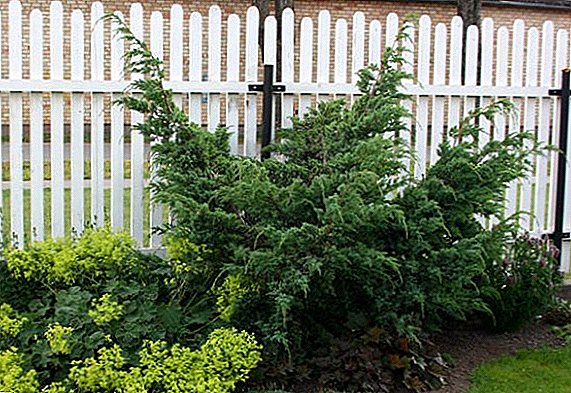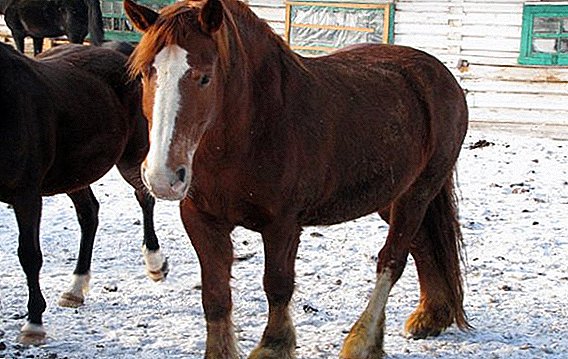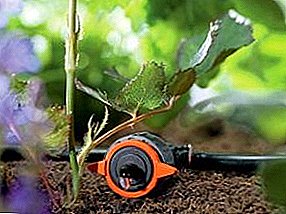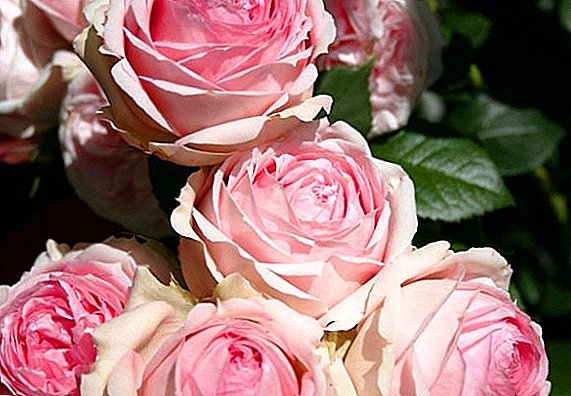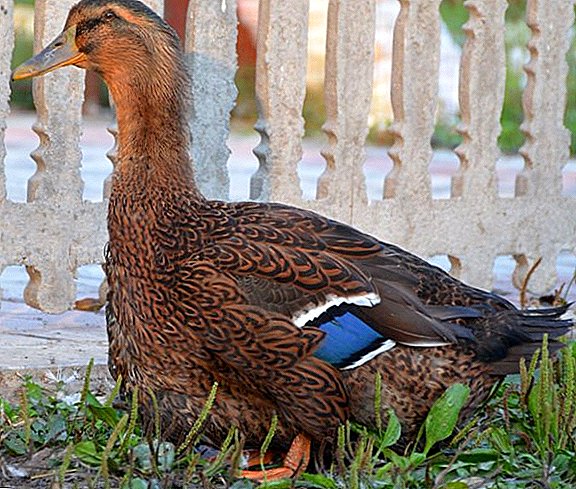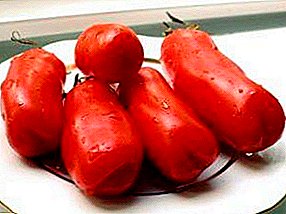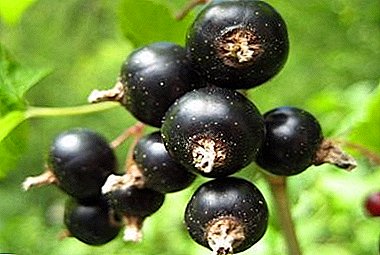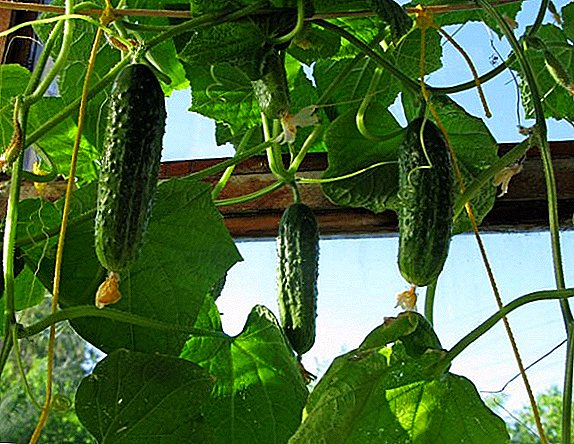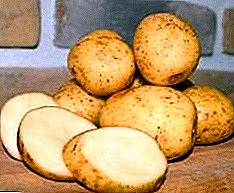
Belarusian potatoes are considered to be the real standard of quality and taste.
It is not surprising that new varieties enjoy the attention of gardeners and farmers, they are grown both for their own needs and as part of their business.
Among these promising new products is Yanka, a fruitful, tasty and easy-to-care variety. In this article we will tell you in detail about it - the description, characteristics of cultivation, characteristics and propensity for diseases.
Origin
Potato variety Yanka bred by Belarusian breeders. The originator is the Belarusian Center for Vegetable and Plant Growing. The grade is brought in the State registry of the Russian Federation in 2012. The potato is zoned for the Central and North-Western regions. It is recommended for cultivation on industrial fields and farms, cultivation on personal kitchen gardens is possible. Harvest well stored, suitable for transportation. Smooth, neat tubers are ideal for sale, they can be packaged right on the field.
Potato "Yanka": description of the variety and photos
| Grade name | Yanka |
| general characteristics | table variety with high yield and good keeping quality |
| Gestation period | 90-100 days |
| Starch content | 14,8-15,4% |
| Mass of commercial tubers | 80-110 |
| The number of tubers in the bush | 8-12 |
| Yield | 195-315 c / ha |
| Consumer quality | pleasant rich taste, the flesh does not darken when sliced, slightly boiled soft |
| Recumbency | 96% |
| Skin color | yellow |
| Pulp color | cream |
| Preferred growing regions | any |
| Disease resistance | medium grade resistant to pathogen phytophthora of leaves and leaves, resistant to golden potato cyst nematode, potato carcinoma |
| Features of growing | responds well to higher doses of mineral fertilizers |
| Originator | Belarusian Center for Vegetable and Plant |
Yanka - mid-season table variety. Productivity is good, depends on growing conditions and region. 195 to 315 centners of selected potatoes are harvested from 1 hectare. The maximum yield is fixed at 360 centners per hectare.
The table presents data on the yields of other very early sorts of potatoes:
| Grade name | Yield |
| Yanka | 195-315 |
| Farmer | From 1 hectare receive more than 200 centners. |
| Meteor | 200 - 400 centners per hectare, depending on the region and climate. |
| Forty days | From 1 hectare can be collected from 200 to 300 quintals. |
| Minerva | From 1 hectare collect from 200 to 450 centners. |
| Karatop | You can collect 200-500 centners per hectare. |
| Veneta | The average figure is 300 centners per hectare. |
| Zhukovsky early | An average of 400 centners per hectare. |
| Riviera | From 280 to 450 centners per hectare. |
| Kiranda | From 110 to 320 centners per hectare. |
Collected tubers are well kept, keeping quality reaches 96%. Read more about the time and storage temperature of potatoes, about possible problems. And also about the storage of root crops in the winter, on the balcony, in the refrigerator, in drawers and in peeled form.
The shrub is medium-sized, upright, with moderately spreading branches. Leaves are medium-sized, light green, with slightly wavy edges. The corolla is compact, assembled from large pale purple, rapidly falling flowers. Berries are rarely tied. The root system is powerful, 8-12 selected tubers are formed under each bush.. Little things and ugly root vegetables a bit.
Below in the table you can see the comparative characteristics of the commodity weight of tubers and their keeping quality in other varieties:
| Grade name | Mass of commodity tubers (grams) | Recumbency |
| Yanka | 80-110 | 96% |
| Meteor | 100-150 | 95% |
| Minerva | 120-245 | 94% |
| Kiranda | 92-175 | 95% |
| Karatop | 60-100 | 97% |
| Veneta | 67-95 | 87% |
| Zhukovsky early | 100-120 | 92-96% |
| Riviera | 100-180 | 94% |
Potatoes are grown on any soil, bushes tolerate minor droughts or temperature drops. The variety is responsive to top dressing, with the application of complex mineral fertilizers, the yield is significantly increased.
Hilling is necessary with the formation of high ridges and the destruction of weeds. In the conditions of hot summer watering is recommended.
Advantages and disadvantages
Among the main advantages of the variety:
- excellent taste of root crops;
- good yield; collected tubers are stored for a long time;
- root vegetables are smooth, beautiful, suitable for sale;
- seed material is not prone to degeneration;
- potatoes are not damaged when digging;
- possible planting on any soil;
- tolerance for the vagaries of weather.
TO minor flaws can be attributed susceptibility to some diseases.
Characteristics of the root
The potato variety "Yanka" has the following characteristics:
- tubers are large, weighing from 80 to 110 g;
- round-oval or oval shape;
- tubers are smooth, neat;
- the peel is yellow, evenly colored, moderately thin, weakly network;
- eyes superficial, few, medium depth, unstained;
- the pulp on the cut is creamy or light yellow;
- starch content is moderate, ranging from 14.8 to 15.4%;
- high content of protein, vitamins, valuable amino acids.
The potato has a pleasant rich flavor. Moderate starch content does not allow the tubers to darken during cutting and cooking, the roots do not boil soft, but become crumbly, not hard. Tubers can be boiled, deep-fried, stuffed, baked. In industrial conditions, potato chips make excellent chips, frozen mixes or sublimated mashed potatoes.
 Read also about other properties of potatoes.
Read also about other properties of potatoes.Why is solanine dangerous, what is the use and harm of raw potatoes, is it possible to drink its juice and eat sprouts and why do it.
You can see the appearance of the Yanka potato in the photo:



Features of growing
As for agrotechnology, this potato is reconciled with any soils, but prefers a light fertile soil. Productivity increases with moderate mineral fertilizer application. Complexes with a high content of nitrogen should be avoided, they contribute to the abundant growth of tops to the detriment of tubers.
Read more about how to feed potatoes, when and how to apply fertilizer, how to do it when planting.
Landing begins in the second half of Maywhen the soil is completely warm. In warmer regions, plant tubers early.
Before planting, the soil is carefully loosened, plant residues are selected from it, which can become a breeding ground for bacteria and insect larvae. For greater safety, the soil can be treated with disinfectants and mulch applied.
Landings need to be changed every three years to avoid infection. It is better to plant potatoes on land that was occupied by legumes, cabbage, carrots, and meadow herbs.
Tubers landed with a depth of 10 cm, the distance between the holes is 30-35 cm. Inter-row width of 70 cm is left. Humus and wood ash can be decomposed by holes.that increases the nutritional value of the soil.
During the planting season 2-3 times spud, forming high ridges above the bushes. Watering is recommended, as well as a single fertilizer application. 10 days before harvesting bushes can be sprayed with an aqueous solution of superphosphate. Foliar fertilization allows to increase the weight of tubers, not allowing them to accumulate nitrates.
Tubers have a thin, but strong peel, which is not damaged when digging. For industrial cultivation, you can use combines with direct or side grip. Harvested potatoes are sorted and dried in the border or under a canopy. Potatoes for sale can be packed directly on the field.
 We offer you some more interesting materials about how to grow potatoes. Dutch technology, the crop without weeding and hilling, the cultivation of early varieties, as well as the harvest from seeds, under straw, in barrels, in boxes, in bags.
We offer you some more interesting materials about how to grow potatoes. Dutch technology, the crop without weeding and hilling, the cultivation of early varieties, as well as the harvest from seeds, under straw, in barrels, in boxes, in bags.Diseases and pests

Potato cancer
Recommended treatment of tubers before planting, spilling the soil with disinfectants. For the prevention of late blight, planting is sprayed with copper-containing preparations.
Read also about Alternaria, Fusarium, Verticillium wilt.
As for insect pests, the potato is most often threatened by Colorado beetles, wireworms, bears and potato moths.
In the fight against them will help special drugs and proven over the years folk methods. And you can read about each of them in detail in the articles of our website:
- The fight against the Colorado potato beetle and its larvae: folk remedies and industrial chemicals.
- Aktara.
- Regent.
- Corado.
- Prestige.
- How to get rid of the wireworm in the garden.
- Chemicals against potato moth: part 1 and part 2.
- We fight with Medvedka using chemistry or folk methods.
Potatoes "Yanka" - very promising variety, not prone to degeneration. Bushes do not get sick, tolerate slight weather changes. Potatoes get tasty, it is perfect for culinary experiments. The harvest is stored for a long time, it can be sold even a few months after harvest.
We also suggest that you familiarize yourself with potato varieties that have different ripening terms:
| Middle late | Medium early | Early maturing |
| Melody | Black Prince | Bellarosa |
| Margarita | Nevsky | Timo |
| Alladin | Darling | Arosa |
| Courage | Lord of the expanses | Spring |
| Beauty | Ramos | Impala |
| Milady | Taisiya | Zorachka |
| Lemongrass | Lapot | Colette | Grenada | Rodrigo | Lyubava | Mozart | Belmondo | Molly | Son | Red Fantasy | Red scarlett |


